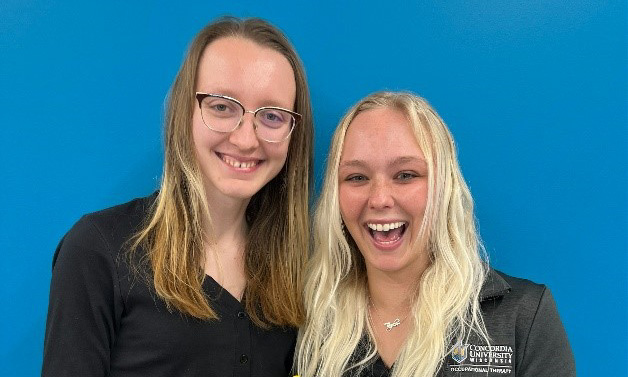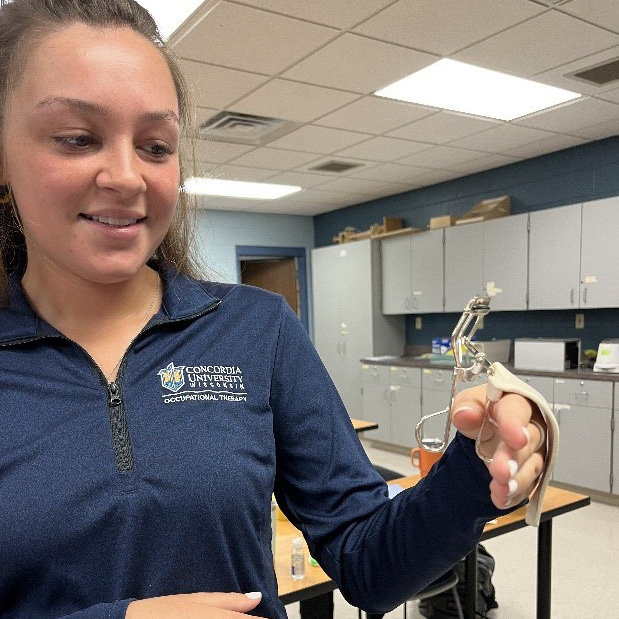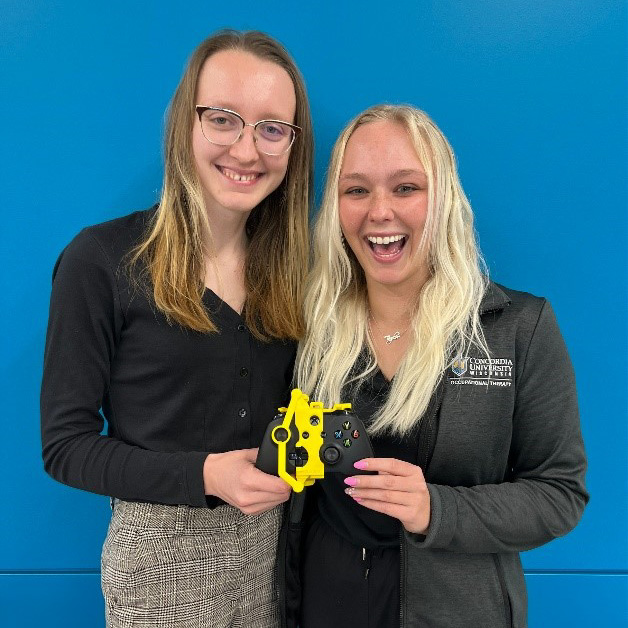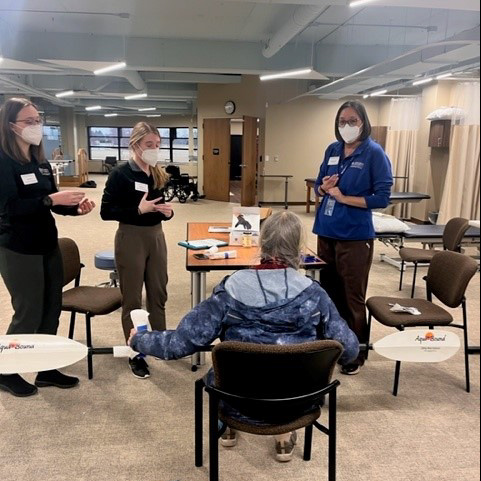
A major way for occupational therapists to support their clients with various activities is through adaptations.
Getting to use one’s creativity to invent new tools or reimagine ways to utilize existing ones is an extremely fun part of the occupational therapy profession. At Concordia University Wisconsin, practicing adaptations happens in both the classroom and within the community clinic. Here are some examples from this semester!
Eyelash curler for spinal cord injury

This past semester, students designed adaptations for patients with cervical spinal cord injuries or weak grasp, in general. Some of these adaptations are commercially available, but clients may have financial constraints preventing their ability to purchase.
“When cost is an issue, occupational therapists can support our clients by using scrap splinting material to adapt pretty much anything,” explains OT Professor Jessica Schmidt, who teaches OT 665: Clinical Reasoning–Neurorehabilitation 2. “As a bonus, salvaging splinting materials means that we reduce waste by having less of it go into the garbage.”
Schmidt says she beamed with pride when student Julia Wol adapted her eyelash curler using leftover splinting material. Pictured left, she demonstrates how her innovation could be used for a person with a C6 or C7 spinal cord injury.
3D-printed additive for gaming controller

Taylor Haartman and Kenna Anderson, both third-semester OT students, helped a community client achieve a major therapy goal this past academic year: to be able to play video games with his son again. The client mentioned numerous times during his six-week session that his son frequently asked him to play the pair’s favorite video game together. Ever since the father suffered a stroke in 2019, he was unable to engage in this occupation that was so important to him due to limited use of his left hand.
After much research and with the help of CUW professors, Haartman and Anderson found a pattern for a 3D adaptor to make the controller one handed. They collaborated with the CUW Makerspace technicians to create and print the design and, ultimately, assemble the pieces together to be used on the controller. The students then introduced it to the client during the session and he was ecstatic.
Grip adaptation for kayaking paddle

Heidea Vaudt, a fourth-semester OT student, worked with a client who loves to kayak; however, a stroke made it more difficult to continue with her favorite hobby. During recovery, Vaudt’s client realized that she couldn’t hold the kayak paddle properly with her left hand anymore. Rather than give up on the occupation, which gave her client so much joy, Vaudt creatively adapted her client’s kayak paddle so she could have a neutral grip on it and get back in the water.
Want in?
Do you have a knack for creating and innovating? Maybe a vocation in occupational therapy is in your future.